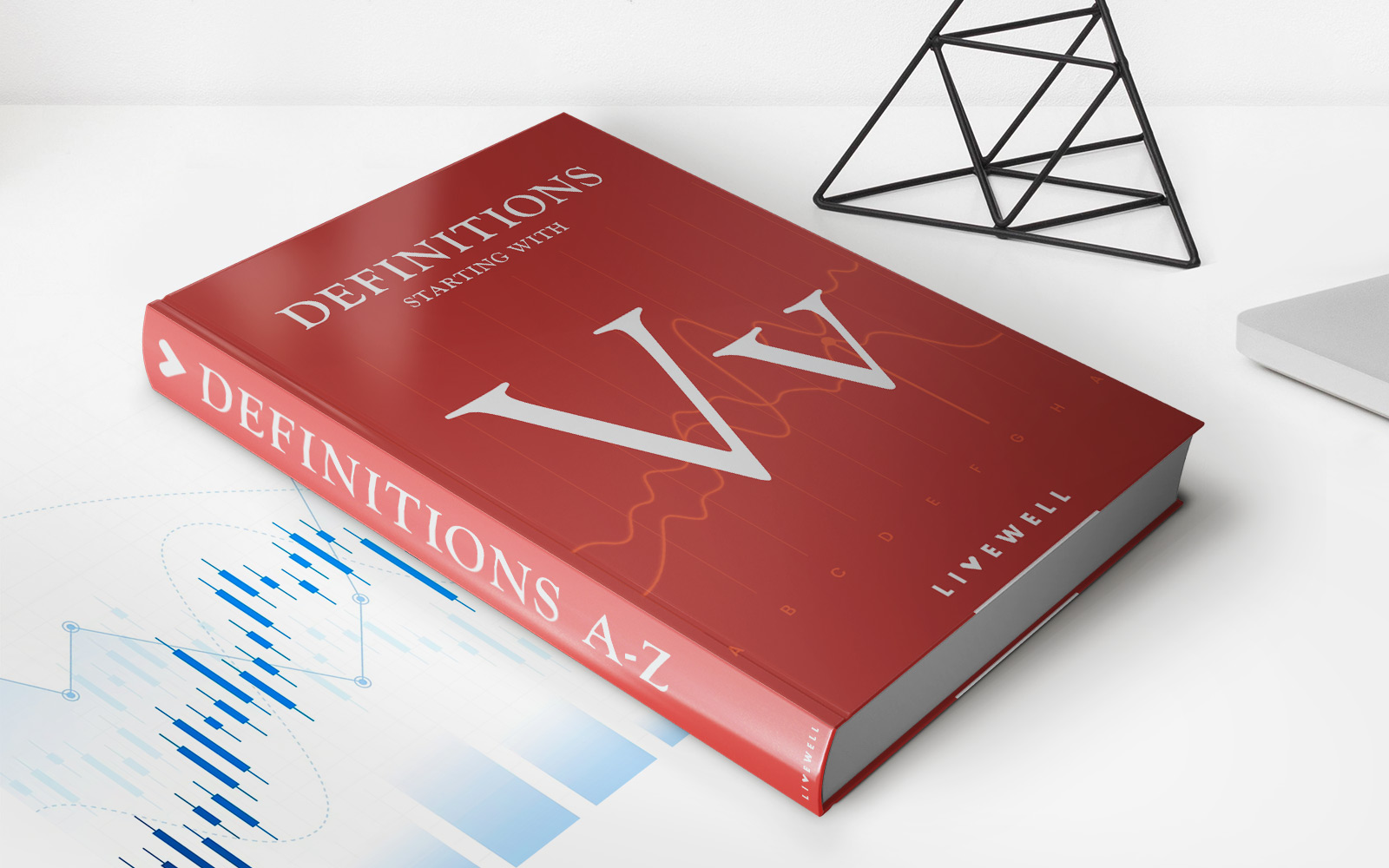Home>Finance>How Are Venture Capital Private Equity Funds Structured


Finance
How Are Venture Capital Private Equity Funds Structured
Published: January 22, 2024
Learn how venture capital and private equity funds are structured in finance. Understand the key elements and strategies for successful investment.
(Many of the links in this article redirect to a specific reviewed product. Your purchase of these products through affiliate links helps to generate commission for LiveWell, at no extra cost. Learn more)
Table of Contents
- The World of Venture Capital and Private Equity Funds
- Organizational Framework and Investment Vehicles
- The Key Players in Venture Capital and Private Equity Funds
- Securing Capital for Venture Capital and Private Equity Funds
- Strategic Deployment of Capital and Value Creation
- Realizing Returns and Wealth Generation
- Understanding the Operational Costs and Compensation Structure
- Navigating the Complex Terrain of Venture Capital and Private Equity Funds
Introduction
The World of Venture Capital and Private Equity Funds
Venture capital and private equity funds are integral components of the global financial landscape, playing a pivotal role in fostering innovation, driving economic growth, and nurturing entrepreneurial ventures. These investment vehicles provide crucial capital to promising startups, established businesses, and companies undergoing strategic transformations. Understanding the intricate structure of venture capital and private equity funds is essential for entrepreneurs, investors, and industry enthusiasts alike. This article delves into the fundamental aspects of these funds, shedding light on their organizational framework, operational dynamics, and key players.
The realm of venture capital and private equity funds is characterized by a dynamic interplay of diverse stakeholders, intricate deal structures, and rigorous investment strategies. From the inception of a fund to its eventual liquidation, a multitude of processes and mechanisms shape the journey of capital deployment, value creation, and wealth realization. By unraveling the intricacies of these funds, we can gain valuable insights into the mechanisms driving innovation, fostering business expansion, and shaping the entrepreneurial landscape.
Venture capital and private equity funds are not only financial instruments but also catalysts for transformative change, propelling businesses towards sustainable growth and fostering the spirit of enterprise. As we embark on this exploration, we will navigate through the intricate web of fund structures, investment processes, and stakeholder dynamics, offering a comprehensive understanding of the mechanisms underpinning the world of venture capital and private equity. Join us on this enlightening journey into the heart of financial innovation and strategic investment.
The Structure of Venture Capital and Private Equity Funds
Organizational Framework and Investment Vehicles
Venture capital and private equity funds are meticulously structured entities designed to channel capital from investors towards high-potential opportunities while managing risk and maximizing returns. These funds typically operate as limited partnerships, comprising two primary categories of partners: general partners and limited partners.
At the helm of the fund are the general partners (GPs), who are responsible for the fund’s strategic direction, investment decisions, and overall management. GPs play a pivotal role in sourcing investment opportunities, conducting due diligence, and providing operational guidance to portfolio companies. Their expertise and industry acumen are instrumental in steering the fund towards successful investments and value creation.
Limited partners (LPs) are the investors who provide the capital for the fund. These can include institutional investors, pension funds, endowments, high-net-worth individuals, and other financial entities seeking exposure to high-growth, alternative asset classes. LPs entrust the GPs with the responsibility of deploying their capital prudently, with the expectation of achieving attractive risk-adjusted returns over the fund’s life cycle.
Furthermore, venture capital and private equity funds are often structured as closed-end investment vehicles, meaning that they have a finite lifespan, typically ranging from seven to ten years. During this period, the fund operates in distinct phases, including fundraising, investment deployment, portfolio management, and eventual liquidation.
The structural framework of these funds is underpinned by a commitment to aligning the interests of GPs and LPs, fostering transparency, and implementing robust governance mechanisms. This ensures that the fund operates with a clear mandate, adheres to ethical standards, and strives to deliver value to all stakeholders involved.
As we navigate through the intricate structure of venture capital and private equity funds, we will gain a deeper appreciation for the synergistic relationship between GPs and LPs, the strategic imperatives driving fund operations, and the mechanisms that underpin successful investment outcomes.
General Partners and Limited Partners
The Key Players in Venture Capital and Private Equity Funds
Within the realm of venture capital and private equity funds, the roles of general partners (GPs) and limited partners (LPs) are pivotal in shaping the fund’s operational dynamics, investment strategies, and overall success. Understanding the distinct contributions and responsibilities of these two categories of partners is essential for comprehending the intricate web of fund management and investment deployment.
General partners (GPs) serve as the driving force behind the fund, wielding significant influence in decision-making, investment sourcing, and portfolio management. Their expertise in identifying high-potential investment opportunities, conducting due diligence, and providing strategic guidance to portfolio companies is instrumental in driving the fund’s performance and value creation. GPs are typically seasoned industry professionals with a wealth of experience in finance, entrepreneurship, and operational management, enabling them to navigate complex investment landscapes and unlock value within their portfolio companies.
Limited partners (LPs), on the other hand, play a crucial role as investors who provide the capital that fuels the fund’s operations and investment activities. These can include institutional investors, pension funds, endowments, family offices, and accredited individuals seeking exposure to alternative asset classes. LPs entrust the GPs with the responsibility of deploying their capital prudently, with the expectation of achieving attractive risk-adjusted returns over the fund’s life cycle. The relationship between GPs and LPs is characterized by a commitment to transparency, aligned interests, and the pursuit of mutually beneficial outcomes.
Furthermore, the partnership between GPs and LPs is governed by a set of legal agreements, including the limited partnership agreement (LPA), which outlines the rights, obligations, and distribution mechanisms for both categories of partners. These agreements serve as the cornerstone of the fund’s governance framework, delineating the roles and responsibilities of GPs and LPs, as well as the mechanisms for profit sharing, fund management fees, and decision-making processes.
By delving into the distinct roles and contributions of general partners and limited partners, we gain valuable insights into the collaborative dynamics that drive the success of venture capital and private equity funds. The synergy between GPs and LPs, underpinned by a shared vision for value creation and wealth generation, forms the bedrock of these funds’ operational framework and investment philosophy.
Fundraising Process
Securing Capital for Venture Capital and Private Equity Funds
The fundraising process is a pivotal phase in the lifecycle of venture capital and private equity funds, laying the foundation for their operational capabilities, investment activities, and value creation endeavors. This multifaceted process involves engaging with prospective investors, articulating the fund’s investment thesis, and garnering commitments from limited partners (LPs) seeking exposure to high-growth, alternative asset classes.
At the outset of the fundraising process, general partners (GPs) embark on a concerted effort to articulate the fund’s investment strategy, value proposition, and track record, compellingly conveying the potential for attractive risk-adjusted returns. This entails crafting a comprehensive private placement memorandum (PPM) or offering memorandum that elucidates the fund’s investment focus, sectoral preferences, geographic scope, and targeted returns. The PPM serves as a foundational document that provides prospective LPs with a holistic understanding of the fund’s objectives, investment approach, and the expertise of the GP team.
Engaging with prospective investors involves a series of roadshows, presentations, and one-on-one meetings, during which GPs elucidate the fund’s value proposition, investment philosophy, and the alignment of interests between GPs and LPs. These interactions are instrumental in fostering trust, transparency, and rapport with potential investors, paving the way for meaningful commitments to the fund.
Furthermore, the due diligence process plays a critical role in the fundraising phase, as prospective LPs conduct a thorough assessment of the fund’s track record, investment team, operational capabilities, and governance framework. This process entails evaluating the fund’s historical performance, the expertise of the GP team, the robustness of investment processes, and the alignment of interests between GPs and LPs. The due diligence phase is a two-way street, allowing GPs to assess the suitability of prospective LPs in aligning with the fund’s long-term objectives and strategic imperatives.
As commitments from LPs materialize, the fund’s capital base expands, empowering GPs to execute their investment strategy, deploy capital into high-potential opportunities, and drive value creation within the fund’s portfolio. The successful completion of the fundraising process sets the stage for the fund’s operational launch, marking the commencement of its investment activities and the pursuit of compelling investment opportunities.
By navigating through the intricacies of the fundraising process, we gain a comprehensive understanding of the strategic imperatives, relationship dynamics, and operational prerequisites that underpin the successful establishment of venture capital and private equity funds.
Investment Period and Portfolio Management
Strategic Deployment of Capital and Value Creation
The investment period of a venture capital or private equity fund marks a phase of strategic deployment of capital, active portfolio management, and value creation within the fund’s investment portfolio. This period, typically spanning several years, is characterized by a concerted effort to identify high-potential investment opportunities, nurture portfolio companies, and drive sustainable growth and profitability.
During the investment period, general partners (GPs) leverage their industry expertise, network, and investment acumen to source compelling opportunities, conduct rigorous due diligence, and negotiate favorable terms with prospective portfolio companies. This phase is marked by a proactive pursuit of innovative ventures, established businesses with growth potential, or companies undergoing strategic transitions, with the aim of generating attractive risk-adjusted returns for the fund’s limited partners (LPs).
Portfolio management plays a pivotal role during the investment period, as GPs assume an active role in guiding the strategic direction, operational enhancement, and value creation initiatives within their portfolio companies. This involves collaborating closely with the management teams of portfolio companies, providing strategic guidance, operational support, and access to the fund’s network of industry experts and advisors. GPs strive to unlock value within their portfolio companies by optimizing operational efficiencies, driving revenue growth, and implementing strategic initiatives that enhance the companies’ market positioning and competitive advantage.
Furthermore, the investment period is marked by a continuous process of monitoring, evaluation, and optimization of the fund’s investment portfolio. GPs conduct regular performance reviews of portfolio companies, assess their strategic alignment with the fund’s investment thesis, and make informed decisions regarding potential divestments, follow-on investments, or strategic realignment of portfolio holdings. This dynamic approach to portfolio management is underpinned by a commitment to maximizing value creation, mitigating risk, and aligning the fund’s investment activities with the evolving market dynamics and industry trends.
By gaining insights into the investment period and the intricacies of portfolio management, we develop a comprehensive understanding of the strategic imperatives, operational dynamics, and value creation mechanisms that drive the success of venture capital and private equity funds during this critical phase of their lifecycle.
Distribution and Liquidation of Funds
Realizing Returns and Wealth Generation
The distribution and liquidation phase of a venture capital or private equity fund marks the culmination of its investment lifecycle, entailing the realization of returns, wealth generation, and the strategic exit of investments. This phase represents a pivotal juncture wherein general partners (GPs) seek to harvest the value created within the fund’s investment portfolio, distribute proceeds to limited partners (LPs), and conclude the fund’s operational journey.
As portfolio companies mature and achieve key milestones, GPs embark on a strategic process of exit planning, encompassing initial public offerings (IPOs), mergers and acquisitions (M&A), or secondary buyouts. These exit strategies are aimed at unlocking the intrinsic value within portfolio companies, providing liquidity to the fund, and generating attractive returns for LPs. The execution of these exit strategies requires astute timing, market acumen, and a comprehensive understanding of the prevailing economic landscape and industry dynamics.
Upon the successful realization of investments, the fund distributes proceeds to its LPs in accordance with the distribution waterfall outlined in the limited partnership agreement (LPA). This entails the allocation of profits, after accounting for carried interest and other fund expenses, to the LPs based on their respective capital contributions and the fund’s performance. The distribution mechanism is designed to ensure equitable sharing of returns among LPs, aligning with the fund’s commitment to transparency and value realization.
Following the distribution of proceeds, the fund enters the liquidation phase, wherein the remaining assets are divested, and the fund’s operations are wound down in an orderly manner. GPs oversee the realization of residual assets, the settlement of outstanding obligations, and the final distribution of proceeds to LPs. This phase requires meticulous attention to regulatory compliance, tax implications, and the fulfillment of any remaining contractual obligations, ensuring a seamless and efficient liquidation process.
The distribution and liquidation phase encapsulates the culmination of the fund’s investment journey, underscoring the successful realization of value within the investment portfolio, the generation of attractive returns for LPs, and the closure of the fund’s operational mandate. By navigating through the intricacies of this phase, we gain a comprehensive understanding of the mechanisms that underpin the realization of returns and the strategic exit of investments within venture capital and private equity funds.
Fees and Expenses
Understanding the Operational Costs and Compensation Structure
Within the realm of venture capital and private equity funds, the assessment of fees and expenses is integral to comprehending the operational dynamics, compensation structure, and cost considerations that underpin these investment vehicles. General partners (GPs) and limited partners (LPs) engage in a collaborative framework governed by a fee and expense structure designed to align the interests of all stakeholders while ensuring the fund’s operational sustainability.
Management fees constitute a fundamental component of the fee structure, enabling GPs to cover operational expenses, compensation for the investment team, and the ongoing management of the fund. Typically calculated as a percentage of the fund’s committed capital, management fees are disbursed periodically throughout the fund’s lifecycle, providing GPs with the resources necessary to execute their investment strategy, conduct due diligence, and drive value creation within the fund’s portfolio. The management fee structure is designed to strike a balance between compensating GPs for their expertise and operational expenses while aligning with the fund’s performance and the interests of LPs.
Carried interest, also known as the performance fee, represents a key incentive mechanism aligning the interests of GPs with those of LPs. This component entitles GPs to a share of the fund’s profits, typically calculated as a percentage of the investment gains realized for LPs. Carried interest serves as a performance-driven incentive, motivating GPs to maximize returns, mitigate risk, and drive value creation within the fund’s investment portfolio. The carried interest structure is designed to foster a shared commitment to generating attractive returns and wealth generation, aligning the compensation of GPs with the fund’s long-term success.
Operational expenses encompass a diverse array of costs associated with fund management, including legal fees, accounting expenses, regulatory compliance, and administrative overhead. These expenses are essential for ensuring the fund’s operational integrity, governance compliance, and the fulfillment of regulatory obligations. GPs diligently manage these expenses to optimize the fund’s cost structure while upholding the highest standards of operational transparency and fiduciary responsibility.
By comprehensively examining the fee and expense structure within venture capital and private equity funds, we gain a nuanced understanding of the mechanisms shaping the operational framework, compensation dynamics, and cost considerations that underpin these investment vehicles. This insight enables stakeholders to navigate the fee structure, align their interests, and foster a collaborative approach to value creation and wealth generation within the fund’s investment portfolio.
Conclusion
Navigating the Complex Terrain of Venture Capital and Private Equity Funds
Venture capital and private equity funds stand as dynamic pillars of the global financial ecosystem, driving innovation, fostering entrepreneurship, and catalyzing economic growth. The intricate structure, operational dynamics, and strategic imperatives that define these investment vehicles underscore their pivotal role in shaping the entrepreneurial landscape and propelling businesses towards sustainable success.
By delving into the organizational framework of venture capital and private equity funds, we uncover the symbiotic relationship between general partners (GPs) and limited partners (LPs), emphasizing the alignment of interests, governance mechanisms, and the commitment to value creation. The fundraising process emerges as a strategic endeavor, marked by the articulation of investment theses, due diligence, and the cultivation of rapport with prospective investors, laying the groundwork for the fund’s operational launch and investment activities.
The investment period and portfolio management phase epitomize the proactive deployment of capital, active engagement with portfolio companies, and the strategic pursuit of value creation. This phase underscores the pivotal role of GPs in steering the strategic direction of portfolio companies, optimizing operational efficiencies, and driving sustainable growth within the fund’s investment portfolio.
As the fund progresses towards the distribution and liquidation phase, the realization of returns, the strategic exit of investments, and the equitable distribution of proceeds underscore the successful culmination of the fund’s investment journey. This phase encapsulates the fulfillment of the fund’s mandate, the generation of attractive returns for LPs, and the strategic closure of the fund’s operational cycle.
Furthermore, the assessment of fees and expenses within venture capital and private equity funds provides a comprehensive understanding of the compensation structure, cost considerations, and the alignment of interests between GPs and LPs. This insight enables stakeholders to navigate the fee structure, foster transparency, and uphold a shared commitment to value creation and wealth generation.
As we navigate the complex terrain of venture capital and private equity funds, we gain a profound appreciation for the multifaceted mechanisms, collaborative dynamics, and strategic imperatives that underpin these investment vehicles. Their pivotal role in fostering innovation, propelling businesses towards sustainable growth, and shaping the global entrepreneurial landscape underscores their enduring significance in the financial ecosystem.














